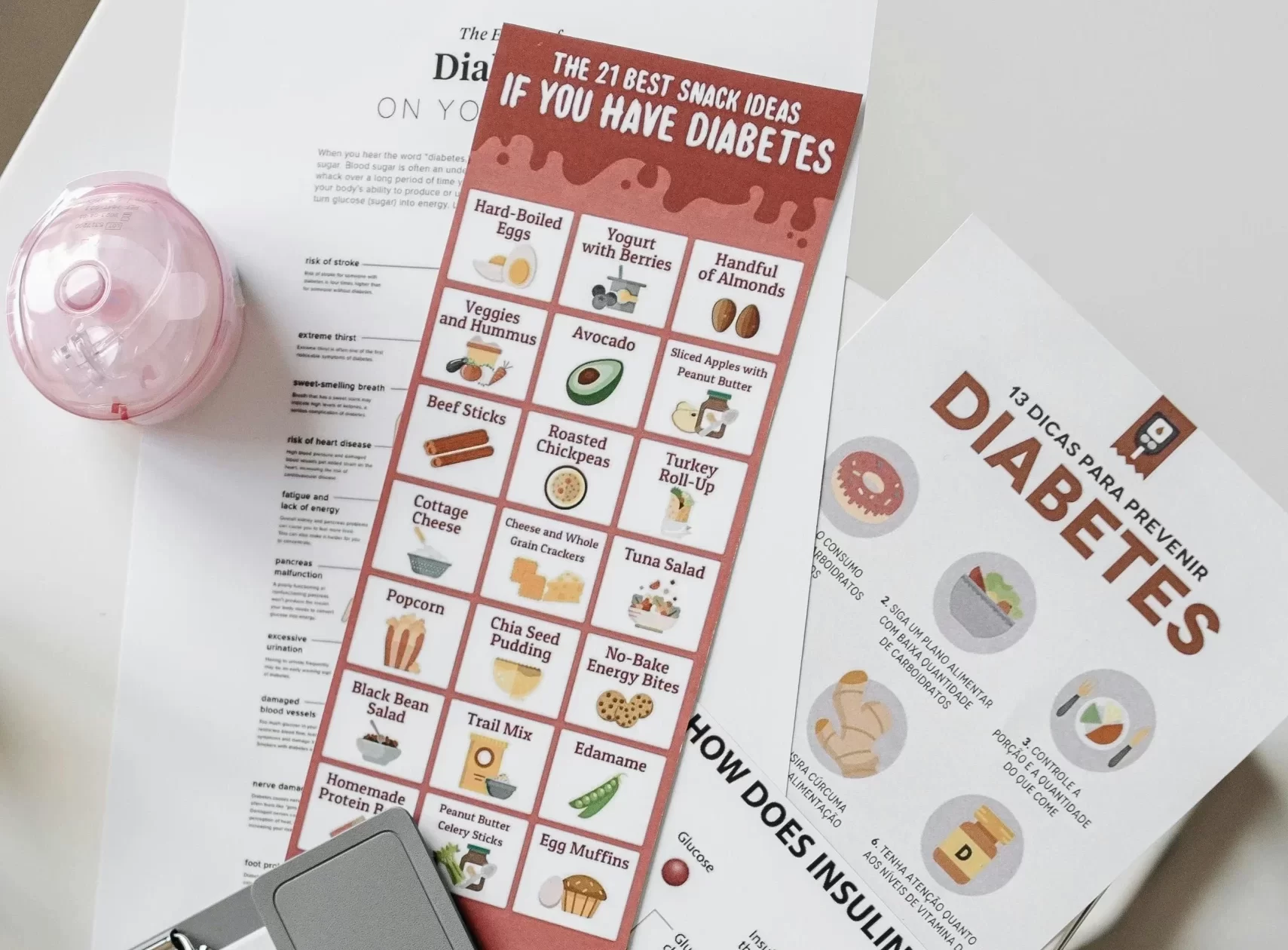Diabetes is a chronic disease characterised by elevated blood glucose (blood sugar) levels. This condition arises when the body either does not produce enough insulin or cannot use insulin effectively, or both.
Insulin, a hormone produced by the pancreas. Insulin helps lower blood sugar by allowing glucose to enter the body’s cells for energy or storage.
However, without effective insulin action, glucose rises in the bloodstream (hyperglycemia). Over time, such elevated blood sugar levels can cause damage to various organs, including the eyes, kidneys, nerves, and heart.
Diagnostic Criteria:
Diabetes is diagnosed using specific blood tests that measure blood glucose (sugar) levels. A diagnosis is made based on established criteria, and in the absence of classic symptoms, results should usually be confirmed with repeat testing on a different day.
| Test name | Criteria | Note |
|---|---|---|
| Haemoglobin A1C (Glycated Haemoglobin) | ≥ 6.5% | Reflects average blood glucose over 3 months; does not require fasting |
| Fasting Plasma Glucose (FPG) /FBS | ≥ 126 mg/dL (7.0 mmol/L) | Requires at least 8 hours of fasting |
| Oral Glucose Tolerance Test (OGTT)/ PPBS | ≥ 200 mg/dL (11.1 mmol/L) at 2 hours | Blood sugar measured 2 hours after drinking 75g glucose solution |
| Random Plasma Glucose | ≥ 200 mg/dL (11.1 mmol/L) with symptoms | Used when classic symptoms (e.g., excessive urination, thirst, unexplained weight loss) are present; |
What is Prediabetes?
Prediabetes is a condition where blood sugar levels are higher than normal but not high enough to meet the criteria for diabetes. It signals an increased risk of developing type 2 diabetes, as well as heart, kidney, and nerve problems.
Diagnosis is made using blood tests. The criteria are:
| Test | Prediabetes Range |
|---|---|
| HbA1C (Glycated Haemoglobin) | 5.7% – 6.4% |
| Fasting Plasma Glucose (FPG) | 100 – 125 mg/dL (5.6 – 6.9 mmol/L) |
| 2-hour OGTT (Oral Glucose Tolerance) | 140 – 199 mg/dL (7.8 – 11.0 mmol/L) |
Newly Diagnosed Diabetes: Key Guidelines
Immediate Actions
- Confirm diagnosis with repeat blood tests (FBS, PPBS, & Hba1c test).
- Check for complications (eye, kidney, nerve damage) and secondary causes (pancreatic issues, medications like steroids). (Liver function test, Renal function test, urine microalbumin, Fundoscopy test, etc.)
- Measure BMI, blood pressure, and lipid profile.
- Diabetic medication (e.g. Metformin) is to be started (if advised by the Doctor), along with lifestyle modifications and a diabetic diet.
Do’s
- Adopt a balanced diet: Use the Diabetes Plate Method (½ non-starchy veggies, ¼ lean protein, ¼ whole grains).
- Monitor carbs: Prioritise whole grains, legumes, and fibre; limit refined sugars.
- Exercise regularly: Aim for 150+ minutes/week of moderate activity (walking, swimming).
Don’ts
- Avoid sugary drinks (soda, juice) except for hypoglycemia.
- Don’t skip meals: Blood sugar fluctuates and is difficult to control if meals are skipped.
- Don’t neglect foot care: Inspect feet daily for cuts/blisters, etc.
Diabetic Diet Essentials
- Carb timing: Spread intake evenly; pair with protein/fibre to slow glucose spikes.
- Portion control: Use smaller plates and measure servings.
- Limit processed foods: Opt for whole foods like leafy greens, berries, nuts, and fatty fish.
Follow-Up Plan
- First Follow-up: 2–4 weeks
- Monitor blood glucose logs
- Check for side effects of medication
- Reinforce lifestyle changes
- Routine Follow-up: Every 3–6 months
- HbA1c: every 3 months (if uncontrolled), every 3-6 months (if at target)
- Monitor BP regularly at home.
- Every 6 -12 months, repeat lipid profile and renal function test
- Eye check-up: annually
- Foot exam: every visit
Critical Tools
- Blood sugar logs: Use apps/paper logs to identify patterns.
- Meal planning apps: Simplify carb counting and portion sizing.
Know Your Targets:
| Test | Target |
|---|---|
| Fasting Sugar | 80–130 mg/dL |
| After Meal Sugar | <180 mg/dL |
| HbA1c | <7% (individualized) |
| BP | <140/90 mmHg (or as advised) |
Conclusion:
Diabetes is a chronic but controllable condition that requires consistent self-care and medical attention. Recognising the signs of hypoglycemia (such as shakiness, sweating, confusion) and hyperglycemia (such as excessive thirst, frequent urination, fatigue) is crucial for timely intervention. Most importantly, adhering to prescribed medications, along with regular monitoring, diet, and exercise, plays a key role in preventing complications and maintaining a healthy, active life.
Sample Diabetic Diet (Indian Food base)
Citations:
- https://diabetes.org/living-with-diabetes/newly-diagnosed
- https://hopkinsdiabetesinfo.org/advice-for-people-newly-diagnosed-with-diabetes/
- https://www.cdc.gov/diabetes/signs-symptoms/coping-with-type-2-diagnosis.html
- https://www.brighamandwomens.org/assets/BWH/medicine/endocrinology-diabetes-and-hypertension/pdfs/phc-diabetes-just-the-basics-newly-diagnosed-type-2-mar2016.pdf?TRILIBIS_EMULATOR_UA=…
- https://pmc.ncbi.nlm.nih.gov/articles/PMC162128/
- https://www.ncbi.nlm.nih.gov/books/NBK279012/


Leave a Reply